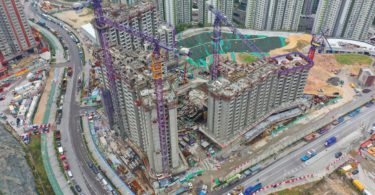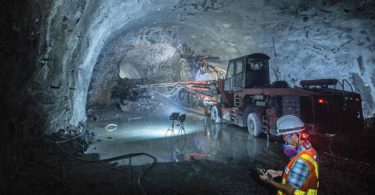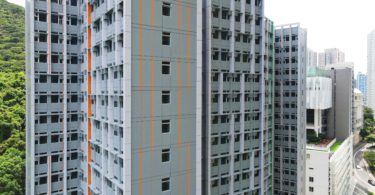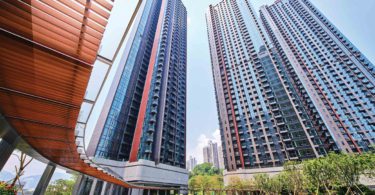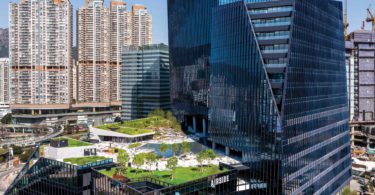Being the seventh-tallest building in the world and the third-tallest in China, the recently completed tower, Tianjin Chow Tai Fook (CTF) Financial Centre is a testament to the extensive skills in using building information modelling (BIM) technology to design and execute world-class structures. Its strong presence is signalling the growth of the Tianjin Economic-Technological Development Area (TEDA) in the west of the city’s historic core.
This project has already won several awards, including the highest honour recognised by the Royal Institution of Chartered Surveyors’ China Awards 2020, as well as other internationally prominent awards including the China BIM Certification Alliance’s Platinum Award and the Steel Structure Gold Award at the China Construction Metal Structure Association’s Annual Outstanding Engineering Awards.
CREATING A NEW OPPORTUNITY TO RESOLVE A NUMBER OF CHALLENGES AT ONCE
The design of Tianjin Chow Tai Fook (CTF) Financial Centre aims to advance architectural design in the digital age for quality living. It accommodates a mix of use needs of offices, apartments and a hotel. To minimise the building volume and to meet space requirements for structure and vertical transportation, the office floors occupy an area of up to 3,800 square metres at the base, while the apartment and hotel floors receding to 1,800 square metres near the pinnacle.
Rather than repurpose an existing structural design, a new opportunity to find the fit and possible structural system were arranged for this. In light of unique response to the project’s constraints, the team apply a hybrid design of stepped-core-in-core structure with a sloped perimeter column system. This design resolves a number of structural challenges at once, from wind forces to earthquake safety.

RESOLVING WIND FORCES AND EARTHQUAKE
One of the main considerations for any supertall tower is how it will resist wind forces. Finding the right shape for the tower can dramatically reduce these forces. The team developed testing on multiple variations of the tapered massing to help the team make further refinements to the design with rounded corners, a scalloped building surface and a tapered crown. At the tower’s apex, a porous design dramatically reduces wind acceleration.
A significant risk consideration of earthquakes is also needed to withstand both wind and seismic loads. Many towers of this size use outriggers supplemental bracing systems to protect against the potential impact of an earthquake. In this project, a series of massive sloped columns is integrated with the tower’s core to make the whole structure resistant against lateral forces.
The sloped-column design proved not only faster to build than a conventional outrigger system, but also significantly reduced the construction cost from the amount of building materials needed to contribute to the environmental impact. This column design saved 19,000 tons of steel, 10,500 cubic metres of concrete and 3,900 tons of rebar.
OPTIMISING THE SIGNIFICANT ROLE OF BIM
BIM technology significantly reduced the time and cost of the tower’s construction and played a vital role in optimising its striking, crystal-clear hyperboloid winding glass curtain wall.
At the start of the construction process, experts estimated that at least 1,308 pieces of independent asymmetric insulating glass units (IGUs) would be required for its distinctive curtain wall structure, formed by the intersection of eight irregular curved surfaces. However, after performing BIM analysis and using repeated data modelling, the number of independent IGUs needed for the centre’s curtain wall was reduced by over 60 per cent to only 476 pieces.
As a result of this BIM analysis and implementation, the project was completed a full four months ahead of schedule. Not only did it save an enormous amount of resources and significantly reduced costs, it also minimised the risks inherent in fabricating and transporting these glass panels.
This project achieves much more than a visual impact, but also significant investments of time, money, and natural resources in resolving all of the requirements from programmatic function to structural performance. The result is not just an icon on the skyline, but also a progressive approach to sustainable development.
PROJECT DATA
Project Title
Tianjin Chow Tai Fook Financial Centre
Location
Binhai District, Tianjin, China
Completion Date
2019
Site Area
27,772 metres square
Gross Floor Area
389,980 metres square
Building Height
530 metres
Client/Owner/Developer
(New World China) New World China Land
Architecture Firm
Ronald Lu & Partners (RLP),
Skidmore, Owings & Merrill (SOM) &
East China Institute of Architectural Design and Research
Project Manager
New World China Land Limited
Interior Design Firm
Dreamtime Australia Design, Laguarda.Low Architects, Lim + Lu, AB Concept Limited & Make
Structural Engineer
Skidmore, Owings & Merrill LLP; East China Architectural Design & Research Institute; & LeslieE. Robertson Associates
Mechanical & Electrical Engineer
WSP & East China Architectural Design & Research Institute
Lighting Consultant
Brandston Partnership & Isometrix Lighting + Design Limited
Landscape Architect
PLandscape & AECOM
BIM Consultant
Syntegrate
Main Contractor
China Construction Eighth Engineering Division
Images
New World China, Seth Powers








